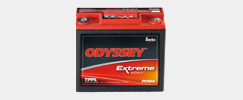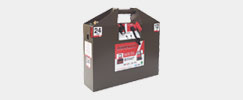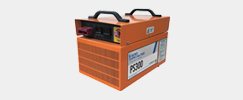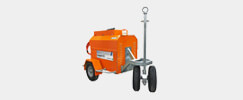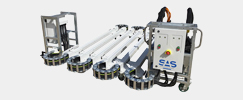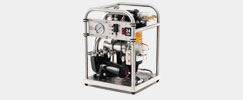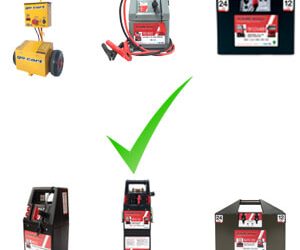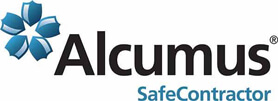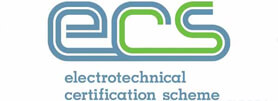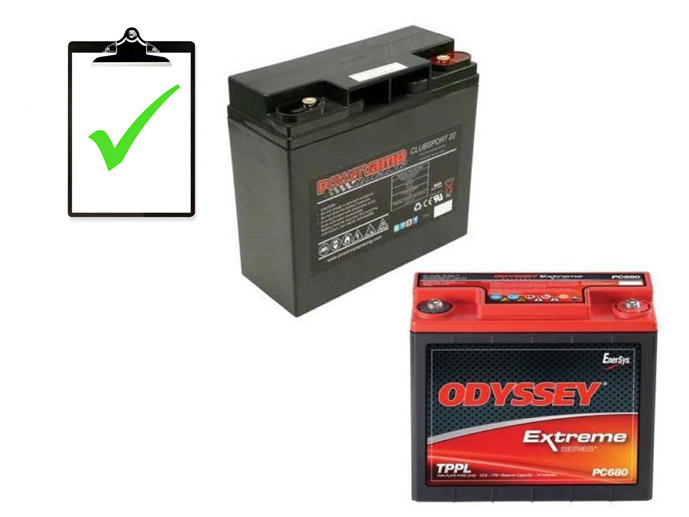
It’s not always a simple task to know the correct Powervamp racing battery for your application. Have a read of our guide below – it takes you through some of the most important questions that need to be asked, and gives an insight on the technology involved. View the entire range of Odyssey batteries HERE.
Technology
Before exploring how to select the correct battery, it is worth taking a look into the basic technology of the batteries supplied by Powervamp Racing.
The Odyssey Extreme range, is known worldwide for high quality, performance and massive cranking power. These properties are due to the exacting manufacturing processes using TPPL (Thin Plate Pure Lead) technology.
Odyssey Extreme series batteries are made with flat plates made of 99.99% pure lead – not lead alloy. Pure lead plates can be made thinner, so more can be fitted inside in the battery. More Odyssey Extreme battery plates mean more plate surface area which equates to more power – up to twice as much as conventional batteries.
This TPPL technology is used in conjunction with an AGM (Absorbed Glass Matt) construction technique, where the electrolyte paste is fully absorbed into a fine glass matt surrounding the lead plates. As well as ensuring outstanding power and recharge capabilities, AGM construction also means that the battery has no harmful liquid acid that can leak out of the case. This is an obvious safety advantage, as well as protecting the area around the installation.
Battery Selection
Whether at an exhibition, car show, or over the phone to our dedicated sales team, the most common query Powervamp Racing receive is: “What size battery should I go for?” There is no hard and fast answer. However, the user can accumulate information to make a calculated choice.
If it is for a competition, classic or fast road car, bike, jet ski etc. checkout our Ebay store (http://stores.ebay.co.uk/Powervamp-Racing) where we have many batteries and ancillary products listed by vehicle type.
If you cannot find the exact vehicle type on Ebay store, letting our sales team have the answer to the following questions will help the selection process:
1. What size engine are you using?
Their are numerous variables to be taken into account, but generally standard compression engines up to: 1600cc would suit the PC545; 2000cc would take the PC680; 3000cc should consider the PC925 or PC950; large V8s may require the PC1100.
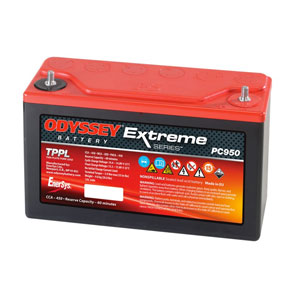
PC950
2. Is the engine diesel or petrol?
Most race cars are petrol, however Odyssey batteries are suitable for starting an engine – providing they are correctly specified. A typical 1.9 – 2.5 TDI engine would require a PC925 or PC950 battery.
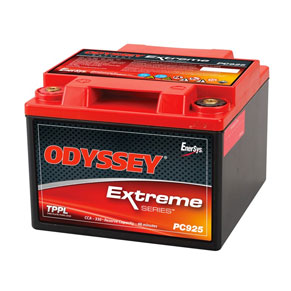
PC925
3. Are you using an alternator?
If not using an alternator then you will be using the battery as a power source only. You will need to choose a battery with a slightly higher amp/hr capacity than normal to ensure that the capacity doesn’t fall low enough to cause issues with the engine cutting out. EG – 1600cc engine with alternator would use a PC545, same engine without alternator should use a PC680.
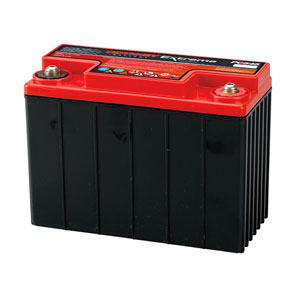
PC545
4. Is it a high compression engine?
This can be the case with modified engines and will normally require a more powerful battery to start the engine. For example, standard compression 2000cc would normally use a PC680 whereas a highly tuned high compression 2000cc engine might need the extra cranking capacity of PC925 battery.
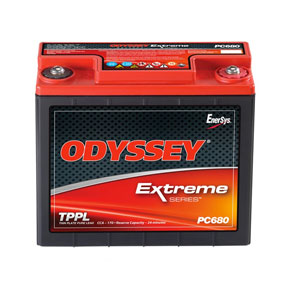
PC680
5. What auxiliary loads are being used (heated screens, light pods etc.)?
Rally cars running heated screens and large light pods etc require much higher amp/hr batteries to compensate for the extra electrical load as well as enabling the car to get back to the next checkpoint should the alternator fail mid stage. PC1100 would be a recommended battery.
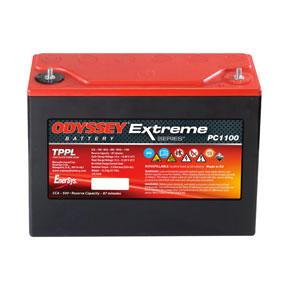
PC1100
6. If a competition vehicle, how long are your races / rallies?
The length of a race is particularly important if running a total-loss system (no alternator), as this will determine how long the battery will last – see question 3. above.
7. Do you or can you use a slave start system?
Yes. A battery jump starter is ideal for taking the strain off the battery when starting an engine. Engines up to 2000cc should use a Gridstart 25, larger engines with frequent starting should consider the Gridstart 35.
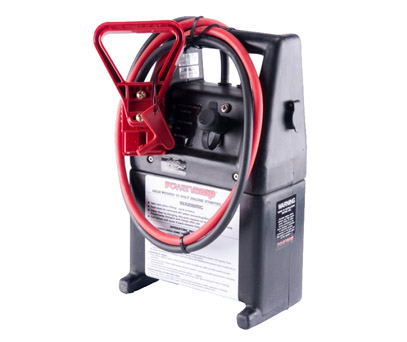
Gridstart 25
8. If used for a show car or for demonstrating uprated ICE systems, do you know what electrical load is required?
A show car with large ICE (In Car Entertainment) will require a considerably larger amp/hr battery to cope with the constant drain from amplifiers, sub-woofers and lighting. The larger PC1200 is often installed due to its increased cranking characteristics. On the subject of lighting, you may find it useful to look into our emergency lighting products.
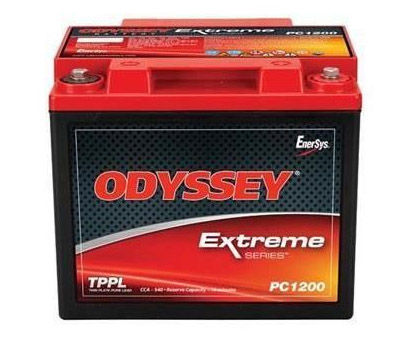
PC1200
9. If used on a 4×4 vehicle, is it just for starting and running the engine and regular systems, or will you also be winching?
Additional battery loads on a 4×4, such as winches, heaters, spotlights etc draw huge amps which is why uprated alternators are often fitted to the vehicles. Uprated batteries are also fitted to ensure all ancillaries will operate independently of the engine running – the PC1700 is a popular, and well proven, choice in this application.
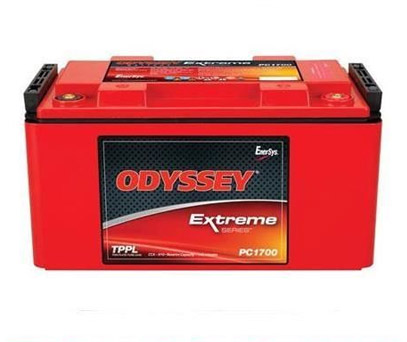
PC1700
One thing that must also be mentioned is don’t be put off by Odyssey Extreme batteries having a lower amp hour value than the standard battery you are trying to replace. The technology described above, means that the battery gives exceptional cranking ability and running power from a smaller capacity unit. For example The Odyssey Extreme PC680 – the most popular battery from Powervamp Racing – which has an 18 Amp Hour rating, is the battery of choice for many highly developed competition cars up to 2.5 litres.
FAQ’s
Q. What size should I use?
A. See the above information
Q. Can I lay the battery on its side?
A. yes, because of the technology the battery can be installed in any orientation (except inverted as to not block vents etc.)
Q. How should I charge the battery?
A. A normal 12v car charger will be sufficient including the trickle / intelligent chargers. DO NOT use high rate workshop boost chargers though.
Q. Do I need to keep the battery on charge when not in use?
A. You can, but one of the advantages of the ODYSSEY EXTREME batteries is that when they are fully charged, if isolated, they can be left and hold their charge whilst not in use for up to 3 months.
Q. Is this a Gel battery?
A. No, it is a common misconception that the ‘G’ in AGM stands for Gel. It Doesn’t, AGM is Absorbed Glass Mat. A Gel battery when in use gets warm and the gel becomes less viscous leading to many of the disadvantages of conventional lead acid units.
Q. Should I flatten the batteries charge when not in use?
A. No a TPPL AGM battery should never be run completely flat.
Q. How long will it last?
A. dependent on use and maintenance you should expect to get 3 years trouble free usage in a competition environment, although this is a guide not a guarantee.
Q. Does it need to be installed in a sealed box for competition use?
A. Some MSA (and other) organisations may have this as a championship regulation, in which case you will have to do so. However, the battery is constructed in a flameproof case, and can also be safely be installed inside the cockpit area.
Q. How should I secure the battery?
A. The battery should be held firmly in place. POWERVAMP RACING provide bespoke lightweight alloy brackets for all batteries. If possible an anti-vibration foam or rubber mat should be placed underneath the contact area.
Q. I hear that Spiral-wound batteries give the same performance?
A. Like many popular spiral-wound batteries, ODYSSEY Extreme Series batteries employ dry cell Absorbed Glass Mat (AGM) technology to contain acid, allowing the battery to be installed even on its side. But the densely packed flat plates in an ODYSSEY Extreme Series battery avoid the “dead space” between cylinders in a “six pack” design. The result is 15% more plate surface area — and that translates to more power!
If this isn’t what you’re looking for, we offer a range of power solutions, including frequency converters and ground power units. We’re experts at explaining our products, such as what is a static frequency converter. Contact us today if you’re looking for more information on power solutions on 01934 643000.



